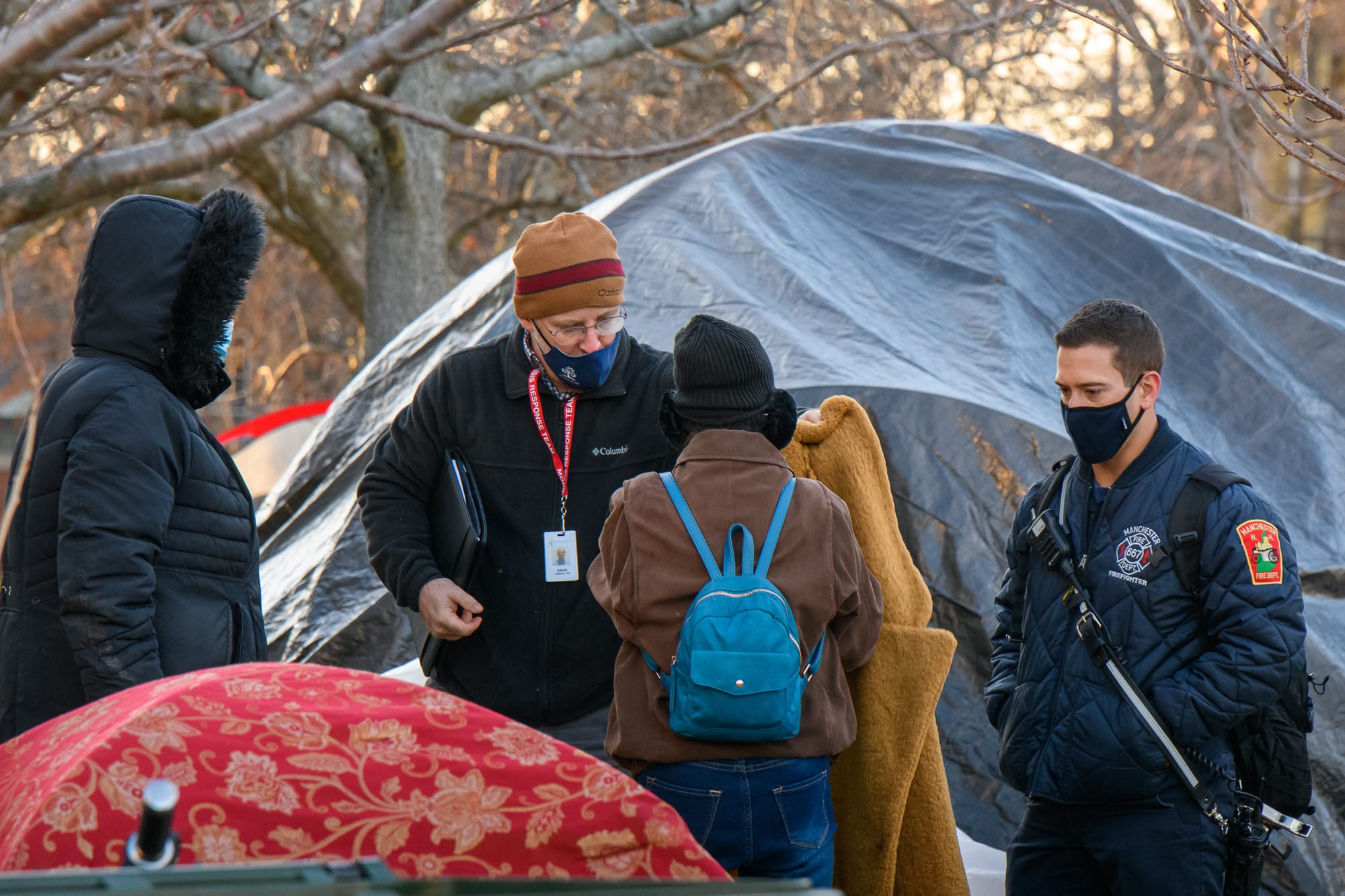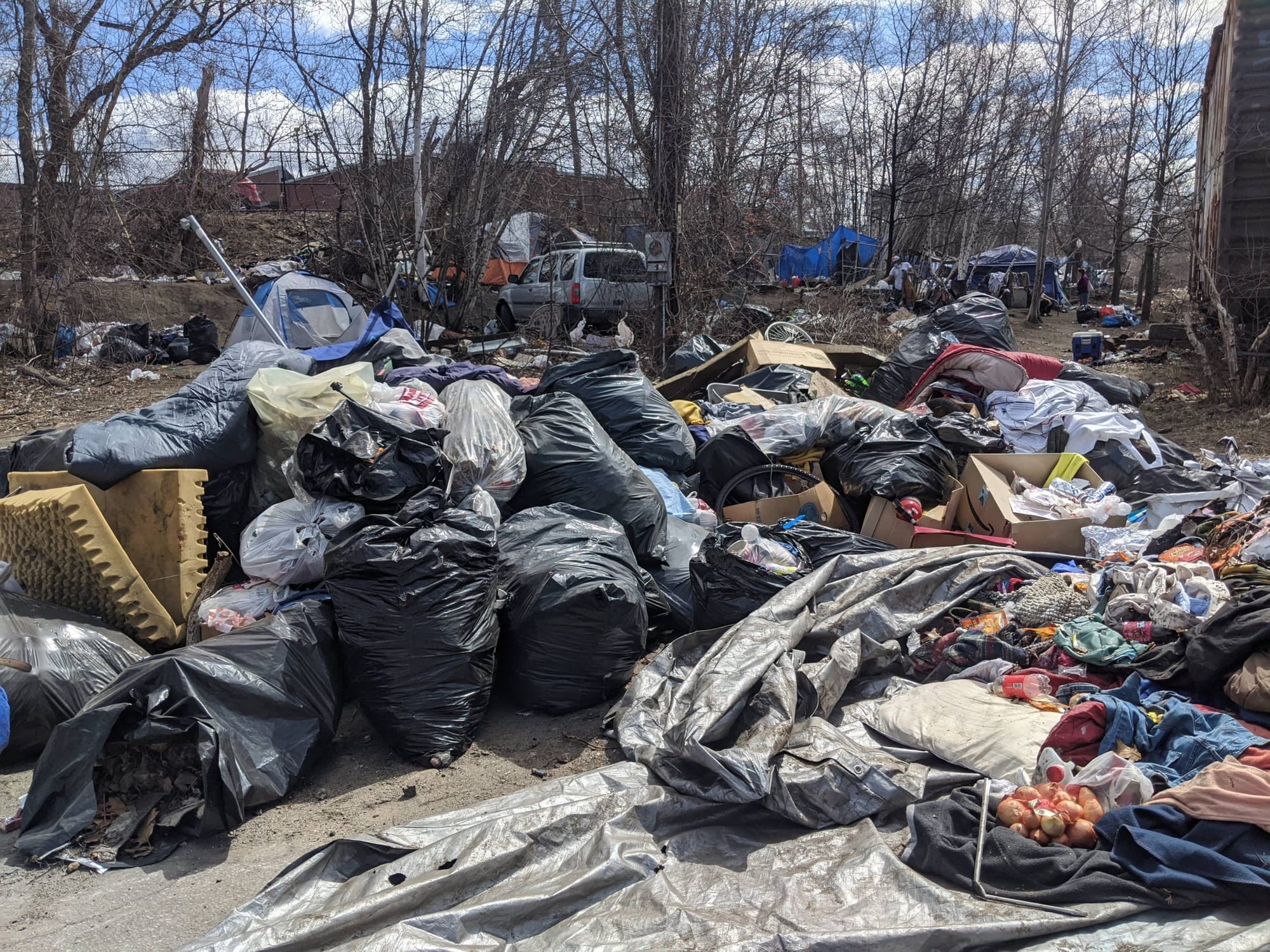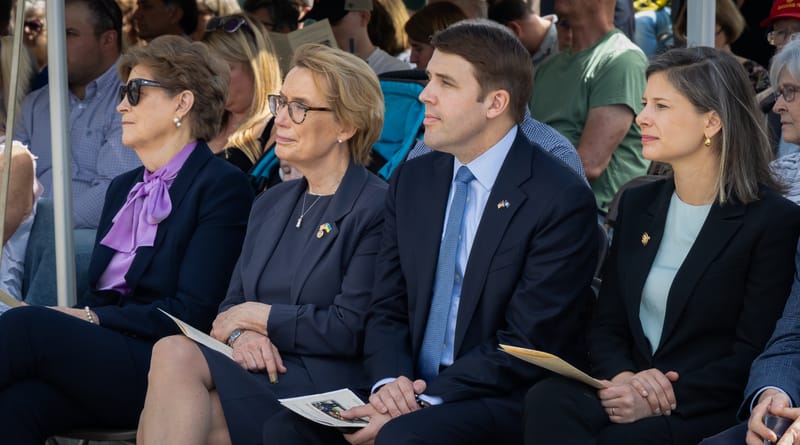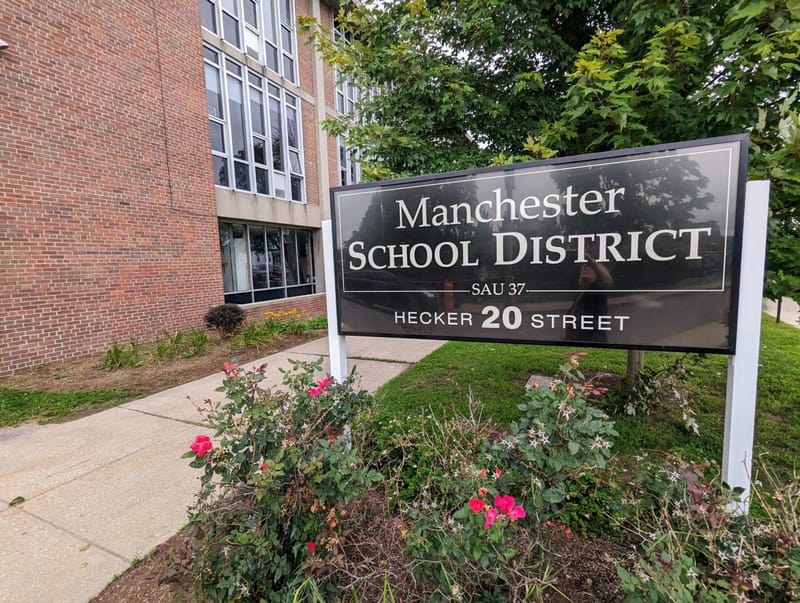Manchester homelessness director to roll out housing initiatives and website for info, resources
Homeless people in the Queen City are reporting to outreach workers that they are increasingly concerned about encampment clearings, and the outreach members are losing connection with individuals and service momentum with each clearing, according to a monthly report by the Manchester Homeless Outre

MANCHESTER, NH – About three weeks on the job and Manchester’s new Homelessness Initiatives Director Schonna Green already has some projects cooking.
Green told Manchester Ink Link Monday that she plans to unveil a new website within the next couple of weeks which will provide useful information for residents, services for people experiencing homelessness and announce new housing initiatives that are aimed at solving one of the long-term causes of homelessness: a lack of affordable housing.
“We’re transitioning into our housing-for-all initiative,” Green said.
She said more details will be announced with the launch of the website, but she said they are working on finding ways to develop, acquire or restructure available units to make new housing options for people of all ages and incomes.
That can include a wide range of housing types, including single-family, two-bedroom or single room occupancy (SRO) units. She said SROs would be small living spaces for individuals with common kitchen and bathroom facilities.
“Similar to what you’d think of as a studio,” Green said.

While some may consider that to be a low-income option, Green said they aren’t looking at limiting it to just low-income renters, adding that some single seniors may enjoy the communal aspects of living in such a building.
Overall, Green said she and a collaborative team-up of local nonprofits in the housing and homeless services sector are coming up with “creative housing options” for a diverse mix of residents.
Green is a strong believer in creating housing that services for a diverse cross-section of different demographics, which she said makes for a “healthy” community and gives less advantaged children exposure to what economic opportunities are potentially available, inspiring social mobility.
So far, two nonprofits are positioning themselves to apply for federally-backed grants and working with architects to design some potential buildings. The development financing would come with deed restrictions to ensure a certain amount of the housing stock remains affordable in the long term.
“More nonprofits have to get involved in the affordable housing arena in order to keep the product least expensive for the population,” Green said
The website will also include links and references to services and local providers for individuals experiencing homelessness, basic information about what the city can do legally to address the housing and homeless crisis, and a means for concerned residents to band together to provide grassroots support.
Meanwhile, homeless people in the Queen City are reporting to outreach workers that they are increasingly concerned about encampment clearings, and the outreach members are losing connection with individuals and service momentum with each clearing, according to a monthly report by the Manchester Homeless Outreach Collaboration.
“There is also increased hesitancy of individuals to share their next location,” the March report states.

Police and city officials cleared out the so-called Firestone camp last month, located behind the Firestone Auto Service on Elm Street. Firestone Auto owns the property and requested the campers be trespassed, along with Pan Am railroad officials.
For some living in that camp, this was not their first time being forced to relocate. Outreach workers learned that many who were cleared from a camp on Canal Street under the Amoskeag Bridge in February ended up at Firestone.
While outreach workers say it adds to the challenges, Green said the city is doing it the right way by ensuring everyone forced from a camp has access to a safe and warm bed at one of the local shelters. There are many, however, who do not accept the offer.
“It’s a balancing act,” Green said.
In March, the city counted 25 encampments (up from 22 in February) and 131 “active” homeless individuals (up from 83), meaning they had contact with outreach workers within the last 30 days. They’ve been unable to locate 70 individuals in over 30 days (down from 113) and the number of people fallen off the radar over 90 days is up to 379 (from 351).
The total census, including all of the above categories, grew from 547 to 580 between February and March.

Outreach contacts skyrocketed in March to 477, up from 227 in February, which was a modest increase from the low point of 145 in January. The shift is largely attributed to the warming temperature, though March also saw a scramble to place individuals in temporary or permanent housing as the emergency shelters on Chestnut and Union streets prepared to close at the end of the month.
Families in Transition spokesman Kyle Chumas said case managers were able to place as many 24 people in services as of March 31, which included housing services, drug and mental health treatment and veteran services.
One of the successes highlighted in the Outreach report described helping a medically frail man in his 50s who had been living unsheltered in the Manchester area and in and out of the adult emergency shelter since 2019. He was successfully housed through a subsidized housing program with the help of a local partner agency.
The man was reported to suffer from alcohol misuse. Outreach workers followed “Housing First” protocols to get the man housing in the hopes of finding stability and treatment after. The team will be supporting the man for up to 12 months as he makes the transition into permanent housing.
Overall shelter bed availability was reduced from 190 to 116 at the end of March.





